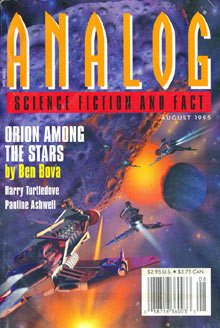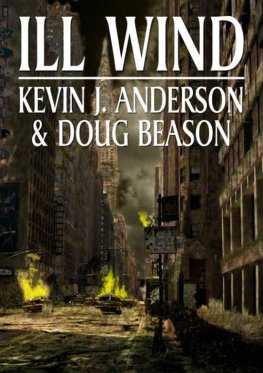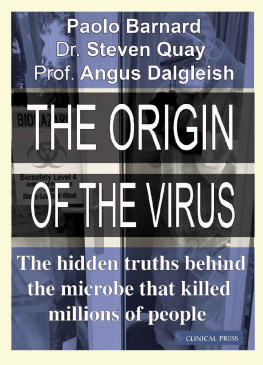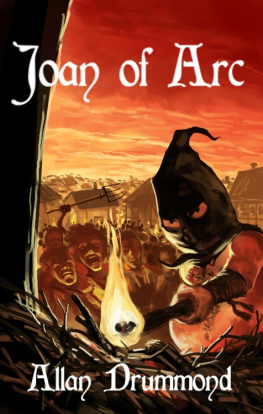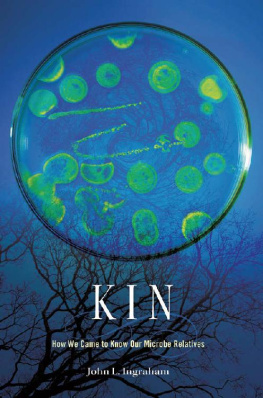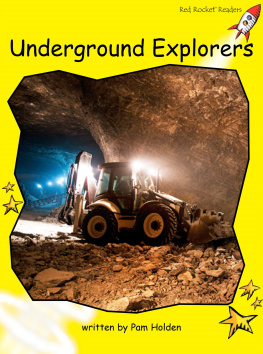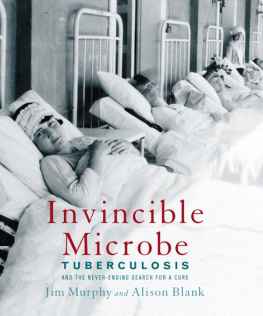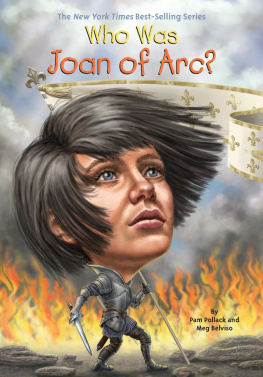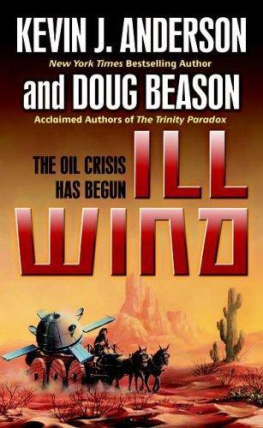Joan Slonczewski - Microbe
Here you can read online Joan Slonczewski - Microbe full text of the book (entire story) in english for free. Download pdf and epub, get meaning, cover and reviews about this ebook. year: 1995, genre: Science fiction. Description of the work, (preface) as well as reviews are available. Best literature library LitArk.com created for fans of good reading and offers a wide selection of genres:
Romance novel
Science fiction
Adventure
Detective
Science
History
Home and family
Prose
Art
Politics
Computer
Non-fiction
Religion
Business
Children
Humor
Choose a favorite category and find really read worthwhile books. Enjoy immersion in the world of imagination, feel the emotions of the characters or learn something new for yourself, make an fascinating discovery.
- Book:Microbe
- Author:
- Genre:
- Year:1995
- Rating:4 / 5
- Favourites:Add to favourites
- Your mark:
- 80
- 1
- 2
- 3
- 4
- 5
Microbe: summary, description and annotation
We offer to read an annotation, description, summary or preface (depends on what the author of the book "Microbe" wrote himself). If you haven't found the necessary information about the book — write in the comments, we will try to find it.
Microbe — read online for free the complete book (whole text) full work
Below is the text of the book, divided by pages. System saving the place of the last page read, allows you to conveniently read the book "Microbe" online for free, without having to search again every time where you left off. Put a bookmark, and you can go to the page where you finished reading at any time.
Font size:
Interval:
Bookmark:
Microbe
by Joan Slonczewski


Illustrations by George H. Krauter
That rat didnt die. Andra walked around the holostage. Before her, projected down from the geodesic dome, the planets image shone: Iota Pavonis Three, the first new world approved for settlement in over four centuries. As Andra walked around, the brown swirl of a mysterious continent peered out through a swathe of cloud. She stopped, leaning forward on her elbows to watch. What name of its own would the Free Fold Federation ultimately bestow on IP3, Andra wondered; such a lovely, terrifying world.
Not the last time, the rat didnt. The eye speaker was perched on her shoulder. It belonged to Skyhook, the sentient shuttle craft that would soon carry Andra from the study station down to land on the new world. A reasonable arrangement: The shuttle craft would carry the human xenobiologist through space for her field work, then she would carry his eye on the planet surface, as she did inside the station. The rat only died down there the first eight times.
Until we got its skin right. The skin was a suit of nanoplast, containing billions of microscopic computers, designed to filter out all the local toxinsarsenic, lanthanides, bizarre pseudoalkaloids. All were found in local flora and fauna; inhaling them would kill a human within hours. In the old days, planets had been terra-formed for human life, like Andras own home world Valedon. Today they would call that ecocide. Instead, millions of humans would be lifeshaped to live here on planet IP3, farming and buildingthe thought of it made her blood race.
We got the right skin for the rat, Skyhooks eye speaker pointed out. But youre not exactly a rat.
From across the holostage, an amorphous blob of nanoplast raised a pseudopod. Not exactly a rat, came a voice from the nanoplast. It was the voice of Pelt, the skinsuit that would protect Andra on the alien planet surface. Not exactly a ratjust about nine-tenths, Id say. Your cell physiology is practically the same as a rat; why, you could even take organ grafts. Only a few developmental genes make the difference.
Andra smiled. Thank the Spirit for a few genes. Life would be so much less interesting.
Pelts pseudopod wiggled. The rat lived, and so will you. But our nanoservos completely jammed. The microscopic nanoservos had swarmed into sample life forms from IP3 to test their chemical structure. But for some reason they could barely begin to send back data before they broke down. Nobody cares about them.
Of course we care, Andra said quickly. Pelt never let anyone value human life above that of sentient machines. Thats why we cut short the analysis, until we can bring samples back to the station. Thats why were sending me.
Us, he corrected.
All right, enough already, said Skyhook. Why dont we review our data one last time?
Very well. A third sentient voice boomed out of the hexagonal panel in the dome directly overhead. It was the explorer station herself, Quantum. Quantum considered herself female, the others male; Andra could never tell why, although sentients would laugh at any human who could not tell the difference. Here are some microbial cells extracted from the soil by the last probe, said Quantum.
The planets image dissolved. In its place appeared the highly magnified shapes of the microbes. The cells were round and somewhat flattened, rather like red blood cells. But if one looked closer, one could see that each flattened cell was actually pinched in straight through like a bagel.
The toroid cell shape has never been observed on other planets, said Quantum. Otherwise, the cells structure is simple. No nuclear membranes surround the chromosomes; so, these cells are like bacteria, prokaryotes.
Skyhook said, The chromosome might be circular, too, as in bacteria.
Who knows? said Pelt. On Italian, all the chromosomes are branched. It took us decades to do genetics there.
We just dont know yet, said Quantum. All we know is, the cells contain DNA.
The usual double helix? asked Skyhook. The double helix is a ladder of DNA nucleotide pairs, always adenine with thymine or guanine with cytosine, for the four different letters of the DNA code. When a cell divides to make two cells, the entire helix unzips, then fills in a complementary strand for each daughter cell.
The nanoservos failed before they could tell for sure. But it does have all four nucleotides.
Andra watched the magnified microbes as their images grew, their ring shapes filling out like bagel dough rising. Ill bet their chromosomes run right around the hole.
At her shoulder Skyhooks eye speaker laughed. That would be a neat trick.
Quantum added, We identified fifteen amino acids in its proteins, including the usual six. All living things have evolved to use six amino acids in common, the ones that form during the birth of planets. But three of the others are toxic
Look, exclaimed Andra. The cell is starting to divide. One of the bulging toroids had begun to pucker in, all along its circumference. The puckered line deepened into a furrow all the way around the cell. Along the inside of the hole, a second furrow deepened, eventually to meet the furrow from the outer rim.
So thats how the cell divides, said Skyhook. Not by pinching in across the hole; instead it slices through.
The better to toast it.
At that Pelts pseudopod made a rude gesture. Pinching the hole in wouldnt make sense, if your chromosomes encircles the hole; youd pinch off half of it.
Andra squinted and leaned forward on her elbows. I saythat cell has three division furrows.
The daughter cells are dividing again already? Skyhook suggested.
No, its a third furrow in the same generation. All three furrows are meeting up in the middle.
Thats right, boomed Quantums voice. These cells divide in three, not two, she explained. Three daughter cells in each generation.
Sure enough, the three daughter cells appeared, filling themselves out as they separated. Other cells too had puckered in by now, at various stages of division, and all made their daughters in triplets. How would they divide their chromosomes to make three? Andra wondered. They must copy each DNA helix twice before dividing. Why would that have evolved?
Never mind the DNA, said Pelt. Its those toxic amino acids you should worry about.
Not with you protecting me. The rat survived.
Quantum said, Weve discussed every relevant point. Weve established, based on all available data, that Andras chance of survival approaches 100 percent.
Uncertainties remain, Skyhook cautioned.
Andra stood back and spread her hands. Of course we need more datathats why were going down.
All right, said Skyhook. Lets go
Im ready. Pelts pseudopod dissolved, and the nanoplast formed a perfect hemisphere.
Andra unhooked Skyhooks eye speaker from her shoulder. Then she walked back around the holostage to lift the hemisphere of Pelt onto her head. Pelts nanoplast began to melt slowly down over her black curls, leaving a thin transparent film of nanoprocessors covering her hair, her dark skin, and her black eyes. It formed a special breather over her nose and mouth. Everywhere the nanoplast would filter the air that reached her skin, keeping planetary dust out while letting oxygen through. The film covered the necklace of pink andradites around her neck, spreading down her shirt and trousers. She lifted each foot in turn to allow the complete enclosure. Now she would be safe from any chemical hazard she might encounter.
Font size:
Interval:
Bookmark:
Similar books «Microbe»
Look at similar books to Microbe. We have selected literature similar in name and meaning in the hope of providing readers with more options to find new, interesting, not yet read works.
Discussion, reviews of the book Microbe and just readers' own opinions. Leave your comments, write what you think about the work, its meaning or the main characters. Specify what exactly you liked and what you didn't like, and why you think so.

